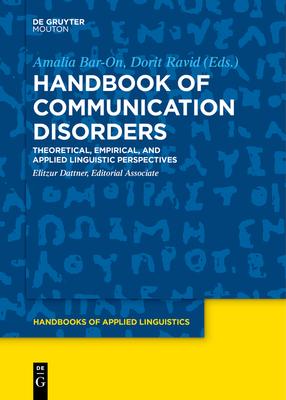The domain of Communication Disorders has grown exponentially in the last two decades and has come to encompass much more than audiology, speech impediments and early language impairment. The realization that most developmental and learning disorders are language-based or language-related has brought insights from theoretical and empirical linguistics and its clinical applications to the forefront of Communication Disorders science. The current handbook takes an integrated psycholinguistic, neurolinguistic, and sociolinguistic perspective on Communication Disorders by targeting the interface between language and cognition as the context for understanding disrupted abilities and behaviors and providing solutions for treatment and therapy. Researchers and practitioners will be able to find in this handbook state-of-the-art information on typical and atypical development of language and communication (dis)abilities across the human lifespan from infancy to the aging brain, covering all major clinical disorders and conditions in various social and communicative contexts, such as spoken and written language and discourse, literacy issues, bilingualism, and socio-economic status.

Handbook of Communication Disorders: Theoretical, Empirical, and Applied Linguistic Perspectives
The domain of Communication Disorders has grown exponentially in the last two decades and has come to encompass much more than audiology, speech impediments and early language impairment. The realization that most developmental and learning disorders are language-based or language-related has brought insights from theoretical and empirical linguistics and its clinical applications to the forefront of Communication Disorders science. The current handbook takes an integrated psycholinguistic, neurolinguistic, and sociolinguistic perspective on Communication Disorders by targeting the interface between language and cognition as the context for understanding disrupted abilities and behaviors and providing solutions for treatment and therapy. Researchers and practitioners will be able to find in this handbook state-of-the-art information on typical and atypical development of language and communication (dis)abilities across the human lifespan from infancy to the aging brain, covering all major clinical disorders and conditions in various social and communicative contexts, such as spoken and written language and discourse, literacy issues, bilingualism, and socio-economic status.